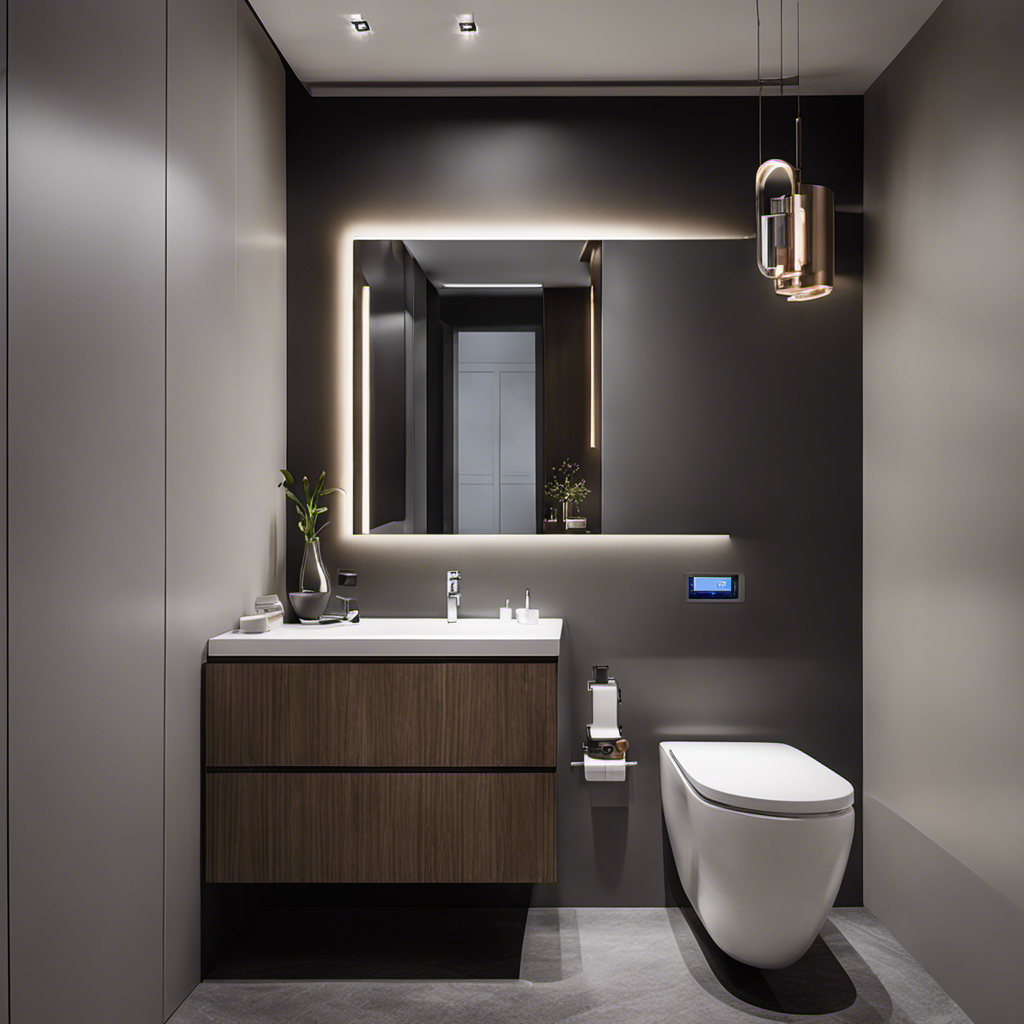I’m here to shed light on the fascinating world of incinerating toilets. Picture this: a toilet that uses intense heat to transform waste into ash. Sounds futuristic, right? Well, it’s a reality.
In this article, we’ll delve into how these innovative toilets work, explore the benefits of using them, discuss factors to consider when choosing one, provide maintenance tips, and even compare them to traditional flush toilets.
So, buckle up and get ready to explore the realm of incinerating toilets.
Key Takeaways
- Incinerating toilets use high temperatures to burn waste into ash quickly and odorlessly.
- They eliminate the need for water, saving water resources and reducing the environmental impact associated with wastewater treatment.
- Maintenance tasks for incinerating toilets include regular cleaning, checking electrical connections, and monitoring the ventilation system.
- Compared to traditional flush toilets, incinerating toilets offer water-saving advantages and help minimize water contamination and environmental footprint.
How Does an Incinerating Toilet Work
An incinerating toilet works by using high temperatures to burn waste into ash. This technology is a modern and efficient alternative to traditional flush toilets.
When waste enters the incinerating toilet, it is exposed to temperatures of up to 1000 degrees Celsius. The waste is rapidly heated, causing it to break down and turn into ash. The incineration process is quick and odorless, thanks to the high temperatures and a ventilation system that removes any unpleasant smells.
The ash that remains after incineration is sterile and can be safely disposed of. This method eliminates the need for water, making it a sustainable and environmentally friendly option. Incinerating toilets have a minimal environmental impact compared to flush toilets, as they do not contribute to water pollution or require extensive infrastructure for waste management.
Benefits of Using an Incinerating Toilet
One of the benefits of using an incinerating toilet is that it eliminates the need for water. This not only saves water resources but also reduces the environmental impact associated with wastewater treatment.
Here are three key benefits of using an incinerating toilet:
-
Environmental Impact: By eliminating the need for water, incinerating toilets significantly reduce the amount of wastewater that needs to be treated. This helps to conserve water resources and minimize the environmental impact caused by traditional flushing toilets.
-
Cost Savings: Since incinerating toilets do not require water for flushing, they eliminate the need for costly plumbing infrastructure, such as pipes and sewage systems. This can lead to significant cost savings in terms of installation and maintenance.
-
Odor Control: Incinerating toilets use high temperatures to burn waste, which effectively eliminates odor. This ensures a more pleasant and hygienic bathroom experience.
Factors to Consider When Choosing an Incinerating Toilet
When choosing an incinerating toilet, you should consider factors such as size, installation requirements, and maintenance needs. These factors are crucial in ensuring the efficient and effective operation of the toilet while minimizing water consumption and reducing the environmental impact. Let’s take a closer look at these factors in the table below:
| Factor | Description | Importance |
|---|---|---|
| Size | The dimensions of the toilet unit and its compatibility | Critical |
| Installation | The specific requirements for installation and venting | Important |
| Maintenance Needs | The regular maintenance tasks and frequency | Essential |
Maintenance Tips for Incinerating Toilets
To ensure the proper functioning and longevity of your incinerating toilet, it’s essential to follow these maintenance tips:
-
Regular cleaning: Clean the bowl and the inside of the incinerator chamber regularly to prevent any buildup of waste or debris. Use a mild cleaning solution and a soft brush to scrub away any stains or residue.
-
Check the electrical connections: Inspect the electrical connections and wires to ensure they are intact and properly connected. Loose or damaged connections can cause issues with the incinerator’s operation.
-
Monitor the ventilation system: The ventilation system plays a crucial role in maintaining the proper airflow and odor control in your incinerating toilet. Regularly check the vents and filters for any blockages or obstructions that may hinder their performance.
By following these maintenance tips, you can minimize common problems with incinerating toilets and ensure that your unit operates efficiently.
Now, let’s explore how incinerating toilets compare to traditional flush toilets.
Comparing Incinerating Toilets to Traditional Flush Toilets
If you’re considering switching from a traditional flush toilet, it’s important to understand the differences between incinerating toilets and traditional flush toilets.
Incinerating toilets offer several water-saving advantages compared to traditional flush toilets. Instead of using water to flush waste away, incinerating toilets use electricity to burn waste into ash. This eliminates the need for water, resulting in significant water savings.
In addition to the water-saving benefits, incinerating toilets also have a positive environmental impact. By removing the need for large amounts of water, these toilets help conserve this precious resource. Furthermore, incinerating toilets do not contribute to the contamination of water sources through the release of sewage.
Overall, by choosing an incinerating toilet, you can reduce your water consumption and minimize your environmental footprint.
Conclusion
In conclusion, an incinerating toilet is a highly efficient and environmentally friendly alternative to traditional flush toilets. Its unique mechanism burns waste at high temperatures, completely eliminating the need for water and sewage systems.
Despite initial concerns about odor and maintenance, modern incinerating toilets have advanced features to address these issues.
While the initial cost may be higher than a traditional toilet, the long-term benefits, such as reduced water usage and lower environmental impact, make it a worthwhile investment.
So, why not consider an incinerating toilet for your next bathroom upgrade?










